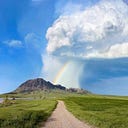Member-only story
Indigenous Girls and Women Are the Most Vulnerable to Sex Trafficking
The violations began with Christopher Columbus and follow through to President Trump’s immigration crackdowns
January is Human Trafficking Awareness Month.
One place this is occurring is at our southern border. Curiously, the Trump administration has used human trafficking as a reason to build a wall and crack down on immigration there, but experts maintain that the changes being made are putting even more migrant families, many of whom are Indigenous from Central America, in greater danger. Migrants who seek asylum legally are now being forced to wait in Mexico until their cases are heard, where they’re considered vulnerable targets and law enforcement is lax.
Human trafficking continues to grow and proliferate because it’s big business. Traffickers make about $150 billion a year from enslaved laborers. The bulk of those profits, 66%, come from sex trafficking.
At detention centers, sexual exploitation has become rampant. Between 2012 and 2018, there were 1,448 allegations of sexual abuse filed with ICE and there were 237 allegations of sexual abuse in their facilities in 2017 alone. This atmosphere, and the fact that children are being intentionally separated from their…

